Saint Alphonsus Ligouri - The Seven Sorrows of the Blessed Virgin Mary
Here you can read online Saint Alphonsus Ligouri - The Seven Sorrows of the Blessed Virgin Mary full text of the book (entire story) in english for free. Download pdf and epub, get meaning, cover and reviews about this ebook. year: 2011, publisher: Rita Bogna, genre: Religion. Description of the work, (preface) as well as reviews are available. Best literature library LitArk.com created for fans of good reading and offers a wide selection of genres:
Romance novel
Science fiction
Adventure
Detective
Science
History
Home and family
Prose
Art
Politics
Computer
Non-fiction
Religion
Business
Children
Humor
Choose a favorite category and find really read worthwhile books. Enjoy immersion in the world of imagination, feel the emotions of the characters or learn something new for yourself, make an fascinating discovery.
- Book:The Seven Sorrows of the Blessed Virgin Mary
- Author:
- Publisher:Rita Bogna
- Genre:
- Year:2011
- Rating:3 / 5
- Favourites:Add to favourites
- Your mark:
- 60
- 1
- 2
- 3
- 4
- 5
The Seven Sorrows of the Blessed Virgin Mary: summary, description and annotation
We offer to read an annotation, description, summary or preface (depends on what the author of the book "The Seven Sorrows of the Blessed Virgin Mary" wrote himself). If you haven't found the necessary information about the book — write in the comments, we will try to find it.
The Seven Sorrows of the Blessed Virgin Mary — read online for free the complete book (whole text) full work
Below is the text of the book, divided by pages. System saving the place of the last page read, allows you to conveniently read the book "The Seven Sorrows of the Blessed Virgin Mary" online for free, without having to search again every time where you left off. Put a bookmark, and you can go to the page where you finished reading at any time.
Font size:
Interval:
Bookmark:
Bogna, Rita Anna (1961-)
The Seven Sorrows of the Blessed Virgin Mary
First edition 2011.
Second edition 2015.
Rita Bogna. All rights reserved.
Cover design: Rita Bogna.
Cover image: The Madonna of the Piet, Catholic Church of the Holy Name at Stepney, South Australia.
The images used in this book are by the French artist Jacques Joseph Tissot (18361902).
This book is copyright. Except as permitted by applicable copyright laws, no part of this publication may be reproduced, stored in a retrieval system or transmitted, in any form or by any means, electronic, mechanical, photocopying, recording or otherwise, without the specific written permission of the copyright owner.
The Seven Sorrows of the Blessed Virgin Mary is published by Rita Bogna on Kindle Direct Publishing. It is a native Kindle book which has been designed and tested for various Kindle software applications and hardware devices.
Read my daily Catholic blog, In Lumine Fidei, at:
http://inluminefidei.blogspot.com.au/
Email:
Amazon Author Page:
http://amazon.com/author/ritabogna
THE SEVEN SORROWS OF THE BLESSED VIRGIN MARY
Prayers, Devotions and Reflections for September

RITA BOGNA
Ah, Mary, pierced with sorrow,
Remember, reach and save,
The soul that comes tomorrow
Before the God that gave!
(Rudyard Kipling, 1896)

Marys martyrdom began with the first knowledge which the prophecies gave her of the sufferings which the Messiah would have to endure. It increased when she was chosen to be the Mother of that Messiah, destined to die a cruel death for the sins of the world. It became more intense when she heard the words of holy Simeon, and saw the flowing of the first drops of our Saviours Blood. It continued during the thirty-three years of our Lords life. It attained its greatest intensity during the hours of the Passion. Even after the Resurrection and Ascension it did not entirely cease: Mary suffered as long as she lived, for she could not forget any of her sorrows, but, on the contrary, recalled every day the painful remembrance by visiting (it is believed) the places where she beheld the sufferings of her adorable Child.
Father Peter Chandlery (18461925)
On the feast of the Assumption in 1233 the Blessed Virgin Mary appeared to seven young noble Florentine men and asked them to withdraw from the world and form a new religious order devoted particularly to her Seven Sorrows. These men, who had become close friends after joining the Confraternity of the Blessed Virgin (the Praisers) in 12251227, were Buonfiglio Monaldo, who was the oldest and became their leader, and Alessandro Falconieri, Benedetto dellAntella, Bartolomeo Amidei, Ricovero Uguccione, Gerardino Sostegni and Giovanni Buonagiunta. Under their spiritual director, Father Giacomo de Poggibonsi, they became more and more unworldly and desired a life of penance and prayer and devotion to the Blessed Virgin Mary.
In a second vision in 1239 Mary bore a black habit in her hand and an angel held a scroll inscribed with the title Servants of Mary. Asking them to spread devotion to her Seven Sorrows, she told them that she had chosen them to be her servants and wished them to wear a black habit and live according to the Rule of Saint Augustine. They retired to the desolate Monte Senario in Tuscany and there built a church and hermitage. From the 13th of April 1240 their religious community became known as the Servants of Mary (the Servites). Pope Alexander IV informally recognised the Order ( Ordo Servorum Beatae Virginis Mariae ) in 1259 and it was formally approved by Pope Benedict XI in 1304. Two years later Saint Juliana Falconiere (12701341) founded the Third Order for women.
As early as 1423 Archbishop Theodoric of Cologne prescribed a feast in honour of Our Ladys sorrows to be kept by his flock. With the knowledge of the Holy See, the feast was gradually introduced in other countries in Europe and papal approval for a feast in honour of the Seven Sorrows of the Blessed Virgin Mary was given to the Servites in 1667. In 1727 Pope Benedict XIII ordered the feast to be kept in the whole Church under the name of the Feast of the Seven Sorrows of the Blessed Virgin, as before this time it had been called by various names, including Our Lady of Pity, The Compassion of Our Lady, and in France, Notre Dame de la Pmoison (Our Lady of the Swoon).
In 1913 Pope Saint Pius X ordered the feast to be observed on the 15th of September, the day after the feast of the Exaltation of the Cross. It is now known as the Feast of Our Lady of Sorrows.
Devotion to the Seven Sorrows of Mary should be practised especially by those who wish to rid themselves of sinful habits. This devotion
nourishes the spirit of compunction;
affords great consolation;
strengthens confidence in Gods mercy;
draws down the special protection of the Blessed Mother in the hour of temptation;
preserves the converted sinner from relapsing into sin.
While praying in the great Basilica of Santa Maria Maggiore in Rome, the Blessed Virgin Mary appeared in a vision to Saint Bridget of Sweden (13031373) with the holy prophet Simeon and an angel bearing a long sword red with blood. According to Saint Alphonsus Maria de Ligouri (16961787), the sword symbolised the long and bitter grief that never ceased to pierce the sacred heart of the Blessed Virgin.
Saint Ignatius of Loyola (14911556) was particularly devoted to Our Lady of Sorrows, wearing on his breast a picture representing Mary at the foot of the cross with her heart transfixed by a sword. When his nephew Father Antonio Araos was leaving Rome for Spain, Saint Ignatius gave him this picture, saying:
Since the day of my conversion, when I exchanged my secular dress for the garb of a penitent, never has this picture left me. I have had it always on my heart with my crucifix, and I have received from it wonderful help. Take it therefore: let it be to you the pledge of a perpetual assistance from Our Lady, and the treasure of your heart.
Saint Paul of the Cross (Paolo Francesco Danei, 16941775) who founded the Congregation of the Passion of Jesus Christ (the Passionists Order) also had a particular devotion to Our Lady of Sorrows. He recommended meditation on the Seven Sorrows to everyone and promoted the devotion to the Seven Sorrows with the same zeal as devotion to the Passion of Christ, for he said that if we go to the cross, there is the Mother, and where the Mother is, there is the Son.
Saint Paul of the Cross compared the sufferings of Jesus and the griefs of His Mother to two seas and said that we pass from the first to the second:
The grief of Mary is like the Mediterranean Sea; for it is written: Magna est velut mare contritio tua [Your voice is like the sea]. F rom this sea we pass to the other boundless sea of the Passion of Jesus, in whose person David says, Veni in altitudinem maris [I came into deep waters], and here the soul enriches herself, and fishes up most precious pearls of the virtues of Jesus and Mary.
Mary revealed to Saint Bridget that she will grant those who daily honour her by saying seven Hail Marys while meditating on her tears and sorrows the following seven graces:
I will grant peace to their families.
They will be enlightened about the divine mysteries.
I will console them in their pains and I will accompany them in their work.
I will give them as much as they ask for as long as it does not oppose the adorable will of my divine Son or the sanctification of their souls.
Font size:
Interval:
Bookmark:
Similar books «The Seven Sorrows of the Blessed Virgin Mary»
Look at similar books to The Seven Sorrows of the Blessed Virgin Mary. We have selected literature similar in name and meaning in the hope of providing readers with more options to find new, interesting, not yet read works.
Discussion, reviews of the book The Seven Sorrows of the Blessed Virgin Mary and just readers' own opinions. Leave your comments, write what you think about the work, its meaning or the main characters. Specify what exactly you liked and what you didn't like, and why you think so.

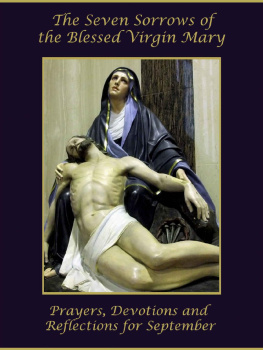
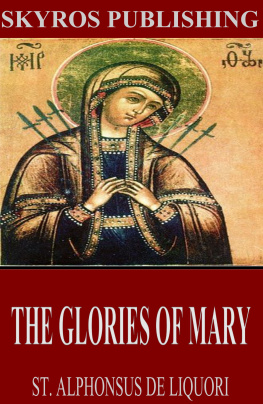
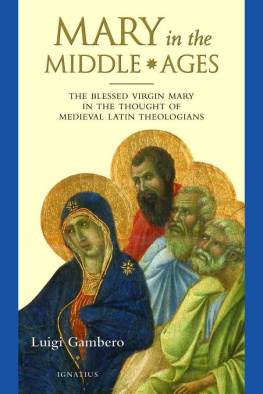
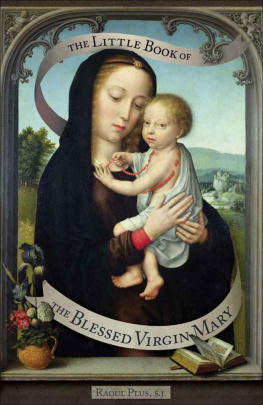

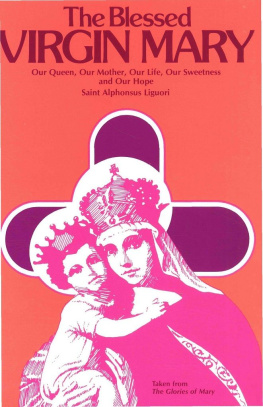
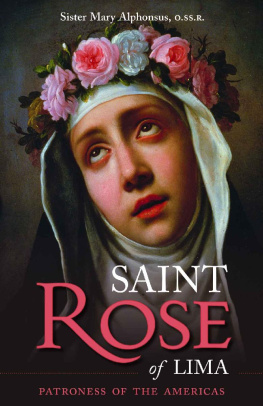
![St. Alphonsus Liguori - Visits to the Blessed Sacrament (with Supplemental Reading: Novena of Holy Communions) [Illustrated]](/uploads/posts/book/269658/thumbs/st-alphonsus-liguori-visits-to-the-blessed.jpg)
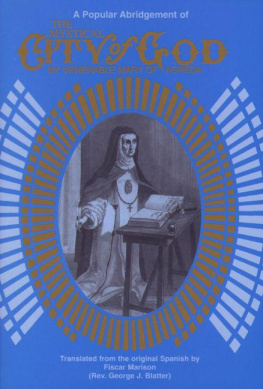
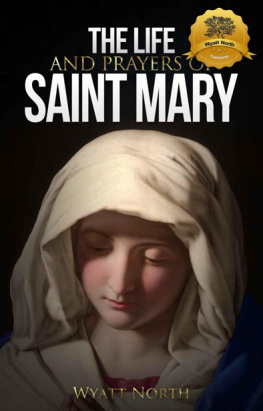
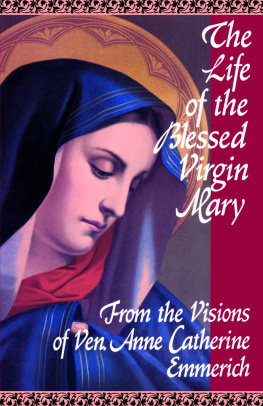
![Saint Alphonsus de Liguori - The Saint Alphonsus de Liguori Collection [30 Books]](/uploads/posts/book/134324/thumbs/saint-alphonsus-de-liguori-the-saint-alphonsus-de.jpg)